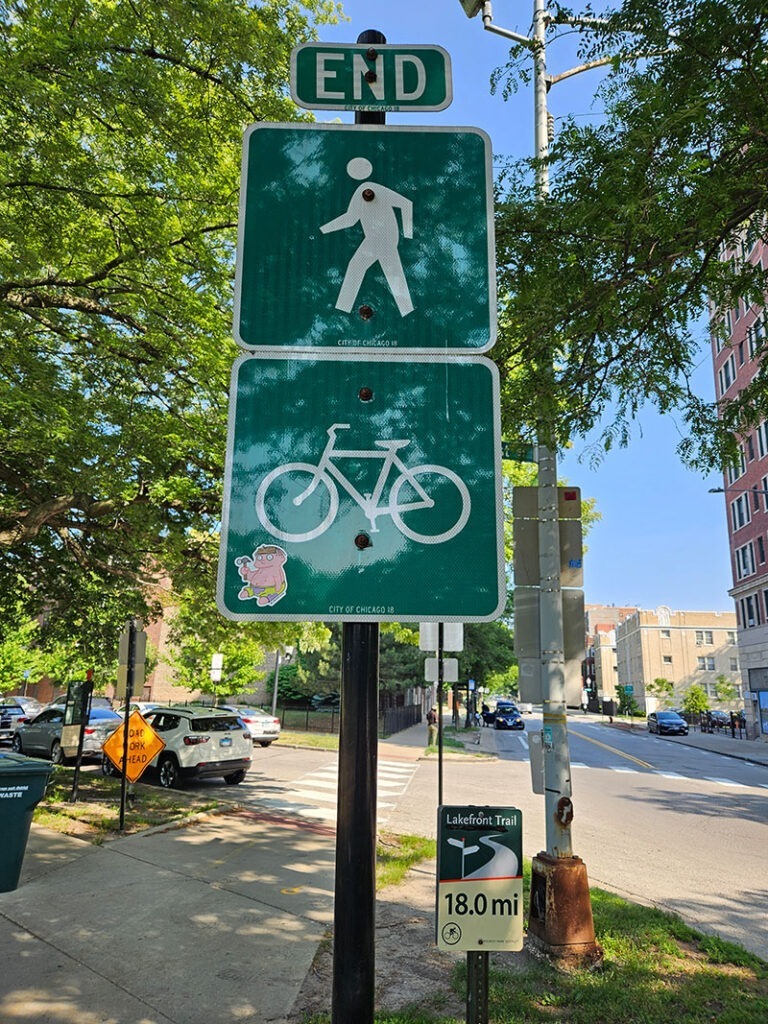Related Content
The lakefront is the city, but the lakefront is also hidden from the city. Along the Lakefront Trail, between Soldier Field and Northerly Island — two of Chicago’s best-known attractions — is one of the city’s least-known monuments: the Gold Star Families Memorial. The memorial commemorates Chicago police officers killed in the line of duty, but I had never seen it until I pedaled past the Museum Campus. The fences are topped with the checkerboard patterns seen above the brims of police hats. The benches are adorned with gold stars. A waterfall races down a rock wall. And at the end of the pebbled trail is a Vietnam Memorial-style wall with the names of fallen officers. Twenty-five panels, with — a sad necessity — room for more names. The final name on the final panel: Ella Grace French, killed while making a traffic stop in 2021.
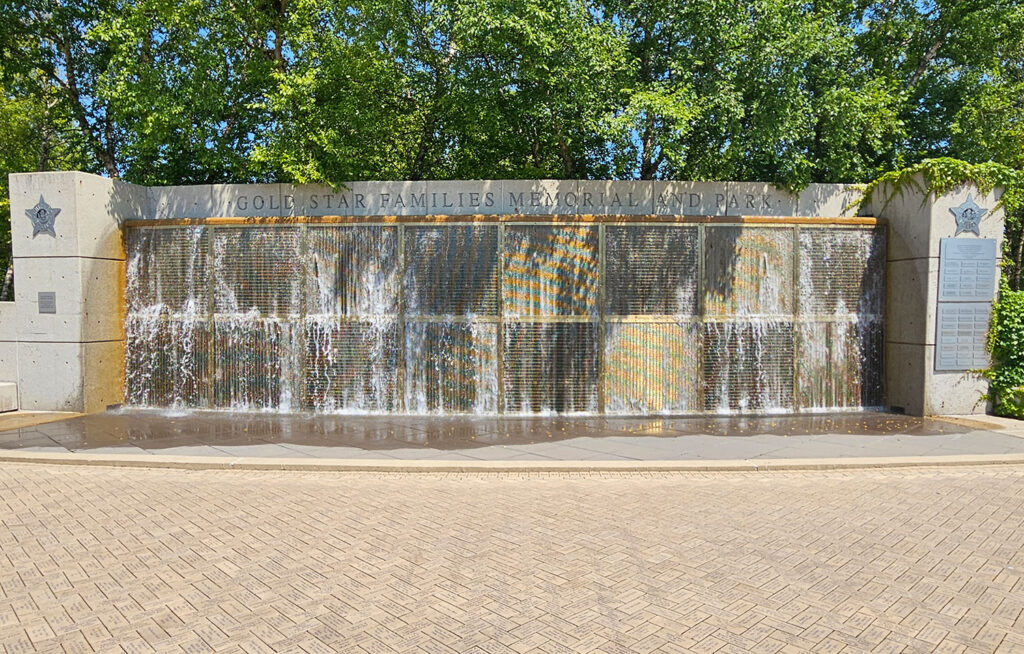
The Lakefront Trail runs along a margin of Chicago. Although it is always in sight of the Great Lake that made the city’s existence possible, and of the downtown skyline, it often feels like an escape from urban life. Just south of McCormick Place, the nation’s largest convention center, is the Burnham Centennial Prairie. In 1818, when it became a state, Illinois was covered with 22 million acres of prairie. By 1978, European settlers had so plowed and paved over the land that the prairie was reduced to 2,300 acres, mostly along railroads and in cemeteries. We’re the Prairie State in name. Only in a few little-traveled places can Illinois ever return to its virgin look. The Centennial Prairie is one: In 2010, the park district began seeding the land with ironweed, mountain mint, gray-headed coneflowers, and other native grasses. They’ve matured into a shaggy grassland that attracts birds, butterflies, and cyclists who want to see the lakeshore as did the Potawatomi, or Marquette and Joliet, when they beached their canoes.
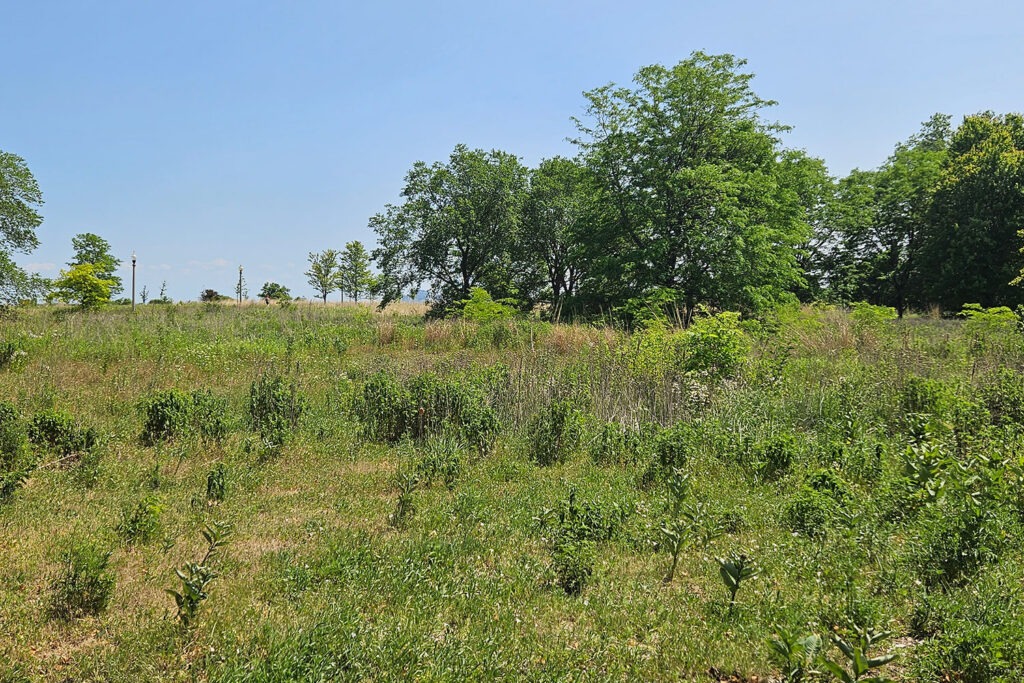
At 35th Street, I follow the sign for the Stephen A. Douglas Tomb, which leads me over a bridge across DuSable Lake Shore Drive, through a wrought-iron gate, and to the base of a 96-foot-column, atop which stands a statue of the five-foot-four-inch Little Giant, rising much higher than he ever did in real life. Douglas’s overcompensating burial marker is surrounded by bronze maidens, labeled Eloquence, Justice, History, and Illinois. In the base is the senator’s sarcophagus, inscribed with his dying words: “Tell my children to obey the law and uphold the Constitution.” I’ve been to Douglas’s tomb before. I just finished writing a book about how Douglas and Lincoln set aside their rivalry to defeat the Confederacy. (For all you history buffs, it’s called Chorus of the Union, out next June from Pegasus Books.) However, I’ve never seen anyone else here, paying respects to Douglas. This time, I do see someone: Kevin Ford, who tends the site for the Illinois Department of Natural Resources. This little park was once part of Douglas’s lakefront estate, Oakenwald. Then it was Camp Douglas, a Civil War prison camp. Now, it’s a state-run monument.
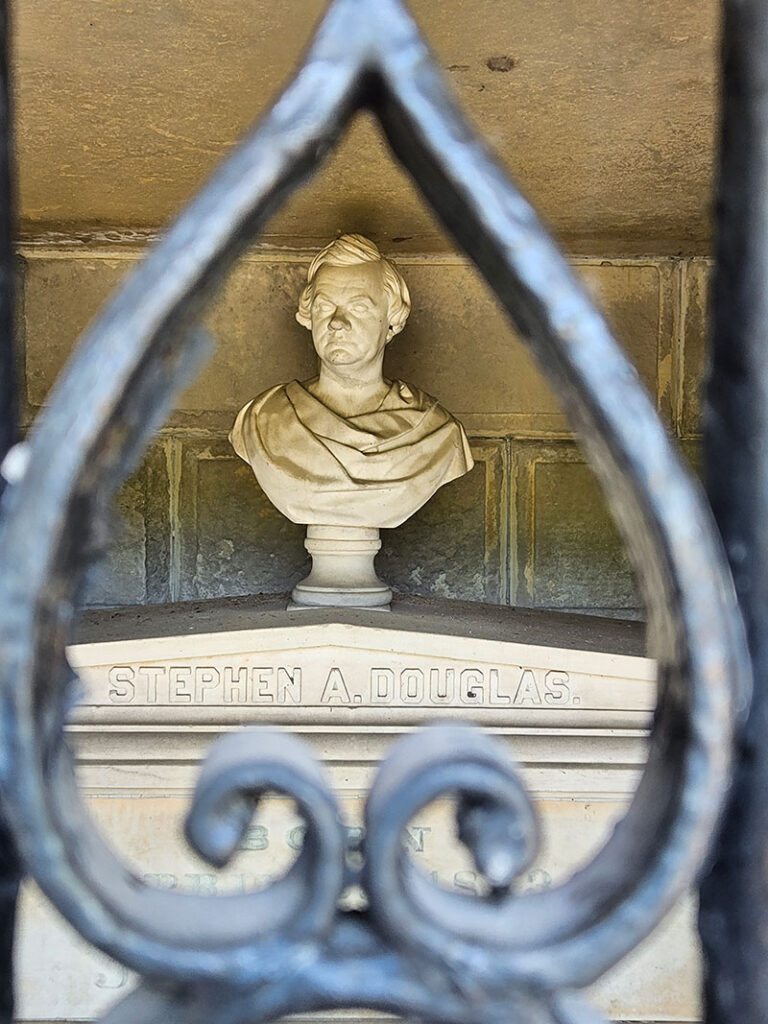
“We’re open every day,” Ford tells me. “We get about six or seven visitors a day. A lot of times, I get the question, ‘He’s buried in there?’ When people die or transition, you usually see them buried in the ground, but you can see him right here. I love being here. I like these old vintage trees. It’s nostalgia. You should see this place at night. If you take a photo of it at night, it literally looks green.”
Douglas was the most famous politician of his day, but his place in history dwindled to that of Lincoln’s foil in their Senate debates. It was reduced even further in 2020, after George Floyd’s murder led to a reconsideration of how the nation honors historic figures. Douglas profited from a Mississippi plantation owned by his wife, and was not above race-baiting to win his election against Lincoln. His statue was removed from the state capitol lawn and a shroud placed over his portrait in the state House chamber. Douglas Park became Douglass Park, after Frederick. Three South Side state representatives asked Gov. J.B. Pritzker to remove Douglas’s statue from atop his tomb, calling him a “bigot…look[ing] down on the Black community,” but Douglas is still up there. Ford, who has become somewhat proprietary about the man whose grave he keeps clean, believes he should stay.
“How is he a racist?” Ford exclaims. “He backed Lincoln! They were trying to end slavery. I had heard about the Douglas Tomb, but after I got assigned it, I learned more about the history.”
On a sunny Saturday afternoon, 31st Street Beach is crowded with swimmers and sunbathers, bronzing themselves in Bronzeville, but Oakwood Beach is…almost empty. That’s because nobody knows about it, and nobody can get there, says the beach’s captain, Martin Ramirez, who is in charge of this little-visited stretch of sand.
“Mayor Daley built it in 2010, this and Osterman,” Ramirez explains. “He wanted to be green, so the parking lot is two blocks away, on 39th. And the bike path is on the other side, so people don’t go past the beach. We get a lot of people who come here to sunbathe, because nobody will bother them. When the temperature gets above 90, that’s when the neighborhood people show up.”
“You got anything to eat here?” I ask. I’ve ridden 13 miles on two tacos.
“Nah, we don’t even have that. You’ve gotta go to 57th.”
The beats halt my pedals. They’re pounding from a speaker plugged into a generator in front of a stone breakwater. I haven’t heard music since Flo Rida at the Y2K Beach Party on North Avenue, but this is underground music, indie music, as befits an empty stretch of South Side lakefront. A DJ stands behind a banner: “EXCURSIONS: a global soul dance adventure.”
“We just want to get out here, play some music, catch a vibe,” says Cordell Johnson. “One Saturday a month, we come out here, take advantage of the day. There’s a crew in Humboldt Park, they have a big following, so I’d like to get that on the South Side. I picked this area because nothing happens here. It’s open. We call it Stonehenge, because of the rocks and the shade of the tree. We’ll probably be out here again the third weekend of July.”
I tell Johnson I’m cycling the entire Lakefront Trail. He tells me I can go even farther.
“There’s a path that’ll take you all the way to 95th Street.”
“Nah, nah, nah. I’m stopping at 71st. Then I’m taking the train back. I gotta make it five more miles. Then I’m done.”
As I ride away, Johnson is playing “All That I Can Say (Connie’s Groove),” by Reelsoul. (I’m not hip. I used SoundHound. I really don’t know any music newer than Scott Joplin.)
On this undeveloped lakefront, in Kenwood, the Army Corps of Engineers has barricaded the shoreline with riprap and cube-shaped sandbags, to hold back Lake Michigan’s rising waters. I don’t see any people until I reach Promontory Point: there, I see hundreds, climbing over the rocks like the pink children climbing the Giant’s Causeway on the cover of Led Zeppelin’s Houses of the Holy album. There is food at 57th Street — BellyUp! Jerk Pit — but like all park concessions, it charges gangster prices: $30 for oxtail. I can get that in South Shore for half the price. Just two-and-a-half more miles!
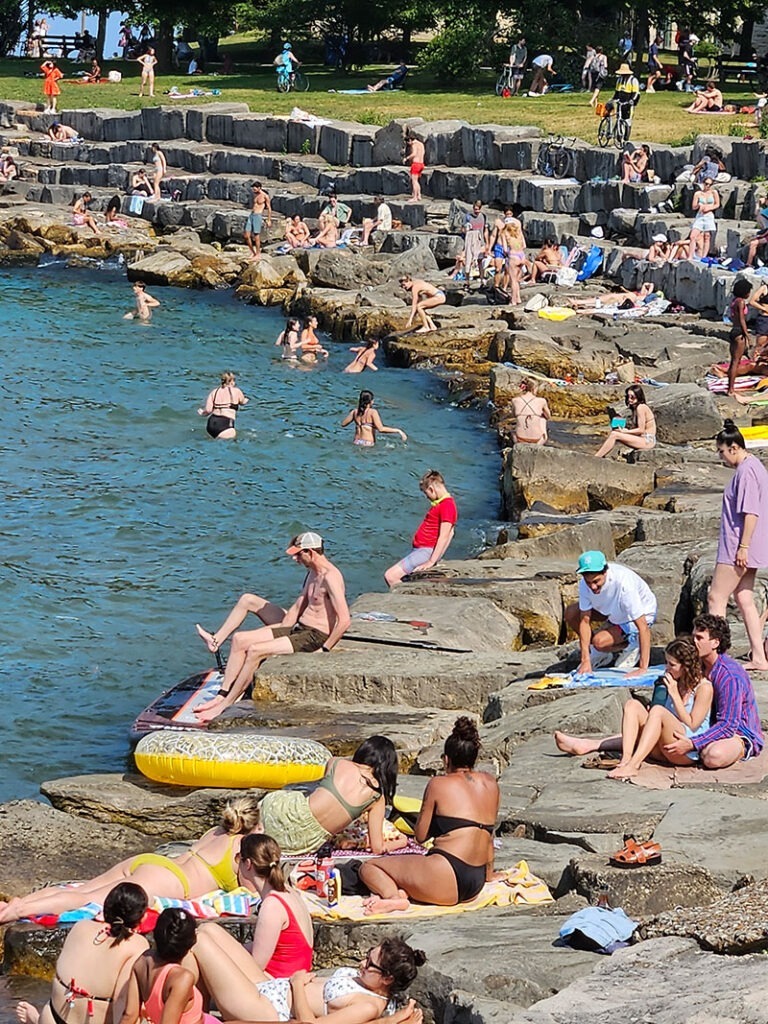
63rd Street Beach has its own Jimmy Buffett-on-the-Great-Lakes bar, Reggie’s on the Beach, but I want to finish this ride before I start drinking. I pass the Jackson Park Boat House. The South Shore Country Club. And then, on a sidewalk on 71st Street, just before it turns into South Shore Drive, I see the “END” sign. “18.0 mi.” (This road is part of U.S. 41, a highway that, improbably, connects the Upper Peninsula of Michigan with Miami, Florida.) I dismount, take a selfie, then walk my bike back to the South Shore Cultural Center, where there’s a beachfront restaurant. To get to my post-ride reward, I have to walk through Rachel and Anthony’s wedding reception in my sweaty shirt. (Best wishes, Rachel and Anthony. Barack and Michelle were married at the South Shore Cultural Center; it’s worked out for them.)
“I just rode the whole Lakefront Trail,” I tell the server at the South Shore Social Beach Club. “Do I get anything free?”
“Congratulations,” she says. “You must be tired.”
I don’t get anything free. I pay $7 for an airplane-sized bottle of Sutter Home moscato. One can only drink wine at the South Shore Cultural Center. This place oozes South Side urbanity, and I want to feel like part of that scene, even though I’m oozing sweat. The stainless steel tables gleam in the lowering sun. Even the lake is a more brilliant blue here, the color of one of Mayor Johnson’s suits. As my mouth inhales a salmon salad, my ears inhale the smooth-jazz saxophones of Kenny G and Boney James. SoundHound again. I’m not that hip. I’m just tired.
